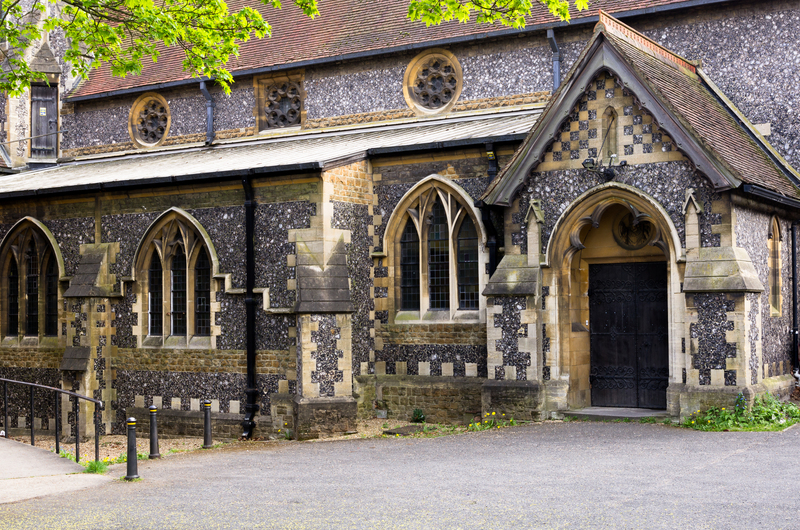From Ivory Keys to Piano Feet: The Journey of Relocation
Posted on 13/06/2025
From Ivory Keys to Piano Feet: The Journey of Relocation
The relocation of a piano is far more than a simple moving task; it's an orchestrated event that combines skill, experience, artistry, and respect for a cherished instrument. Whether you own an upright, a grand piano, or a cherished family heirloom, understanding the journey from ivory keys to piano feet during relocation will help preserve its harmony and value. In this article, we explore every facet of piano moving--from unique challenges and preparation techniques to hiring professional piano movers and post-relocation care, ensuring your beloved instrument continues to create magical melodies in its new home.
Table of Contents
- Why Piano Relocation is Unique
- Preparing for the Journey
- Choosing Expert Piano Movers
- The Step-by-Step Relocation Journey
- Post-Move Care: Tuning & Adjustment
- Frequently Asked Questions
- Conclusion
Why Piano Relocation is a Unique Journey
Unlike ordinary furniture, pianos possess intricate inner mechanisms, fragile ivory keys, and substantial weight distributed unevenly across slender legs or 'piano feet.' A grand piano can weigh over 1,000 pounds, while even smaller uprights demand careful handling. Beyond their size and weight, pianos are susceptible to changes in temperature and humidity, making the journey of piano relocation a meticulous process that safeguards the instrument's tone, structure, and soul.
Major Challenges in Moving Pianos
- Delicate Components: The internal strings, hammers, soundboard, and keys can be damaged by jarring impacts or improper handling.
- Bulky and Irregular Shape: Pianos rarely fit through doors or up staircases without careful angling and protective padding.
- Sensitive Finish: Scratches or dings to a piano's polished woodwork are both cosmetic and costly to repair.
- Weight Distribution: The heavy cast iron plate and soundboard may cause stress on the fragile legs if not moved correctly.
- Climate Sensitivity: Extreme temperatures and humidity shifts can disrupt tuning or warp wood components.
Because of these factors, relocating a piano safely is a choreographed process that requires specialized equipment, expertise, and sometimes a touch of courage.
Preparing Your Piano for Its Journey
Whether you're planning a cross-country move or just shifting floors within your home, sorting out the details of your piano's journey will lead to a smoother relocation. The preparations you make before the move will significantly reduce risks to your instrument's integrity and sound.
Pre-Relocation Checklist
- Measure Everything: Record your piano's dimensions and all doorways, staircases, and hallways along the path.
- Clear the Route: Remove rugs, furniture, and debris that could impede movers or damage the instrument.
- Secure Loose Parts: Close the lid and fallboard over the keys; remove music stands or legs if possible.
- Document the Condition: Take photos of the piano's surface and note any existing scratches or blemishes.
- Plan for Protection: Acquire soft blankets, padding, and straps for added security during the move.
Tip: Professional piano relocation experts always use custom dollies, furniture straps, and ample padding. Never attempt to move a piano with just a few friends and a moving van--it could result in serious damage or injury.
Selecting the Best Piano Movers
The choice of mover is perhaps the most crucial part of your piano's journey. Hiring specialized piano moving services can mean the difference between a safe arrival and a costly disaster.
Qualities to Seek in Piano Relocation Partners
- Experience and Certification: Look for companies that specialize in piano moving, with certified and insured teams.
- Equipment: From skid boards and heavy-duty dollies to ramps and climate-controlled vehicles, professional movers should be equipped for all scenarios.
- Insurance and Guarantees: Reputable movers provide comprehensive insurance for both transit and handling, giving you peace of mind.
- Reviews and Recommendations: A proven track record and positive testimonials speak volumes about trustworthiness.
- Transparent Pricing: Request a detailed estimate that covers potential surcharges, such as stairs or craning services for upper floors.
Don't hesitate to ask for references or photos from past piano moves. The right movers treat every piano as if it were a precious work of art.
The Step-by-Step Journey of Piano Relocation
Let's break down the entire piano relocation process--from the first touch to the final placement in its new environment.
1. Pre-Move Assessment
- Professional movers inspect both the piano and the intended route to identify potential obstacles and formulate a plan.
- They may remove the piano's legs or pedals for easier maneuvering--especially for grand pianos.
2. Wrapping and Padding
- Piano is fully covered in heavy-duty moving blankets and special padding to protect the finish and internal mechanism.
- Secure straps prevent sliding or shifting during transit.
3. Strategic Lifting and Positioning
- Using proper lifting techniques and equipment, the team places the piano onto a fitted dolly or skid board.
- Movers carefully navigate hallways, doorways, and steps, maintaining constant communication.
4. Loading and Transport
- Piano is loaded into a climate-controlled truck, secured with additional straps and supports.
- For long-distance moves, drivers monitor temperature and humidity to prevent damage.
5. Unloading and Installation
- Movers reverse the process, navigating the new space, assembling any disassembled components, and positioning the piano.
- Piano Feet: Great care is taken when attaching the feet and setting the instrument down, as improper handling here can damage both the piano and your floors.
6. Final Checks
- Inspect the instrument for new scratches or signs of distress.
- Ensure piano is positioned away from direct sunlight, heating vents, or exterior doors for optimal preservation.
The entire process can take several hours to a full day, depending on the size of the piano relocation and the specific challenges of each location.
Caring for Your Piano After Relocation
The journey doesn't end once your piano rests on its new feet. The stress of movement and shifts in temperature and humidity levels can affect tuning and overall performance. Post-move care is vital to ensure your piano sounds as beautiful as ever.
Top Post-Move Care Tips
- Allow Settling Time: Let the piano acclimate for one to two weeks before arranging a tuning session.
- Tune Regularly: Schedule a professional tuning soon after the move, and then maintain at least biannual tunings.
- Monitor Humidity: Place a humidifier or dehumidifier in the room as needed to keep humidity between 40-50%.
- Check the Action: If you notice sluggish keys or odd sounds, consult a piano technician to inspect the action and regulate.
- Regular Cleaning: Wipe the keys and wood surface with a soft, slightly damp cloth. Avoid commercial cleaners that can damage the finish.
Consistent aftercare ensures your instrument continues to deliver exquisite sound, maintaining both its functional and sentimental value through every new home.
Frequently Asked Questions About Piano Relocation
How much does it cost to relocate a piano?
The cost of piano relocation varies widely depending on the size and type of piano, distance, complexity (stairs, turns, elevators), and additional services such as crating or climate control. On average, expect local moves to cost between $200 and $600, while long-distance moves can exceed $2,000.
Can I move a piano myself?
While it's technically possible to move very small pianos with enough manpower, it's strongly discouraged. The risks of damage or injury are high due to the instrument's weight, delicate parts, and awkward shape. For most households, professional piano relocation services remain the safest and most prudent option.
How should I prepare my piano for moving?
- Secure and lock the keyboard lid.
- Remove or immobilize moving parts like music stands or pedals.
- Wrap the entire piano in blankets or pads.
- Communicate any original paperwork or warranty requirements to your movers.
Is there a best season for relocating a piano?
While pianos may be moved any season, avoid extreme weather. Spring and early autumn provide ideal moderate temperatures and humidity, posing fewer risks of damage during transport and resettling.
What should I do if my piano was scratched during the move?
Document all damage immediately and contact your mover's insurance provider. Minor scratches can often be repaired by a piano technician or wood-finish specialist. Prevent future issues by selecting fully insured, reputable movers.
From Ivory Keys to Piano Feet--A Journey to Cherish
A piano is more than just an instrument--it's a beloved member of the household, a vessel for cherished memories and future compositions. The journey of piano relocation, from the first tap on its ivory keys to the careful placement of its sturdy feet in a new space, is a process that demands respect, preparation, and expertise.
By understanding the unique challenges, preparing thoroughly, and enlisting the help of experienced piano movers, you ensure that your piano arrives safely, sounds sublime, and inspires music in its new home for generations to come. So next time your instrument embarks on a move, remember: the real melody isn't just in the notes, but in the careful, thoughtful journey behind every relocation.





